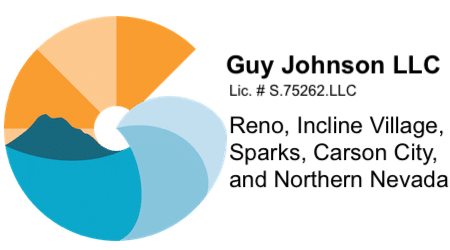
This is a guest post from Bob Skinner, one of our agents up at the Lake, about the recent fire in South Lake Tahoe.
The song of wind in the pines used to be music to my ears,
one of the pleasures of life in the forest. That was ‘then’. The reality of
‘now’ is that on a warm summer day we hear not music but a threat, our senses
alert for traces of smoke. That’s the
reality of life in the Wooey, or Wildland Urban Interface.
smoke rising thousands of feet into the sky from the southwest. Thirty-five mph winds bent it overhead, gusts
to 50 were reported. It was accompanied
by ash, falling like black snow. The
wildfires and advised to pack up and be prepared to evacuate on three occasions
has made us a bit sensitive to those signs. The adrenaline subsided a bit when we learned that the fire was at the
other end of town, but relief turned to worry and immense sadness that so many
friends and families in our community were evacuating from and losing their
homes, or worse yet running for their lives from the flames.
management for a century, resulting in an enormous unnatural buildup of fuels
around many of our communities. Modern
fire science now suggests a more proactive approach, and in 2004 Chimney Rock
neighborhood residents were invited to form a Chimney Rock Chapter of the
Nevada Fire Safe Council, or NVFSC. Our
experiences with wildfire and the results of the 2004 Nevada Community Wildfire Risk/Hazard
Assessment Project, which labeled Chimney Rock at EXTREME risk of catastrophic
wildfire, made us eager to jump in.
Fortunately Bob McDowell, one of our
neighbors and a retired USFS Forester, took the reins and has successfully
guided us through the maze of obtaining grant money that has been used to
conduct two major fuels reduction and defensible space projects in the
neighborhood. With guidance from NVFSC, the assistance of the Tahoe Douglas Fire Protection District
and increasing support from the Tahoe Regional Planning Agency we’ve come a
long way toward making the Chimney Rock neighborhood Fire Safe, but there’s a
long way to go.
fund raising. Many more Chapters have
been formed and all need money, but to date there simply hasn’t been sufficient
political will to give fuels reduction projects the funding priority they
deserve.
of government mean more groups are competing for slices of a smaller pie. A lot of good work has been done, but not
enough to seriously mitigate the threat of catastrophic wildfire in the
control of
entity with its own complex body of regulation.
There is the Forest Service, trying to do its part but hampered by
budget constraints. There is the Tahoe
Regional Planning Agency, increasingly supportive of fuel reduction efforts
within its own extremely complex regulatory environment. In sum, lots of good intentions, but not a
quick-response kind of climate.
riprap, miles of curbing directing runoff to myriad settlement ponds. Best Management Practices to mitigate
sediments reaching Tahoe’s blue water. Wood burning stove ordinances, mandated to improve air quality and,
ironically, to keep particulate matter from settling in the lake. A catastrophic wildfire will render all these
costly efforts moot. The price will be
measured not only in enormous loss of personal property, but also in the
devastation of our environment and local economy.
and will no doubt be lined up to provide relief to those injured by this
tragedy, as they should be. But please
contact your elected representatives to let them know that you also expect your
government to respond to the Angora Fire by committing substantial resources to
a proactive prescription of fuels reduction on both public and private
land.
Spending now to mitigate the
threat of catastrophic wildfire will pay enormous dividends in the future,
serving not only to protect life, property and our unique
Tahoe environment, but also to protect our tourist-based economy,
business environment and the tax base which supports local government. We need grass-roots citizen involvement to
spur governments to action in order to secure our future.
space work we won’t eliminate future wildfires, and we certainly won’t
eliminate the dangers inherent in dry conditions and high winds, but maybe we
can reduce the danger enough to again enjoy the music of wind in the trees here
in the Wooey.
Tahoe Blue – Don’t Let Tahoe Burn!
Stateline,











Diane Cohn
From the San Francisco Chronicle: Tahoe Fire Prediction 1995
(Thanks to regular reader Jim for this link.)
http://sfgate.com/cgi-bin/blogs/sgreen/detail?blogid=40&entry_id=18017